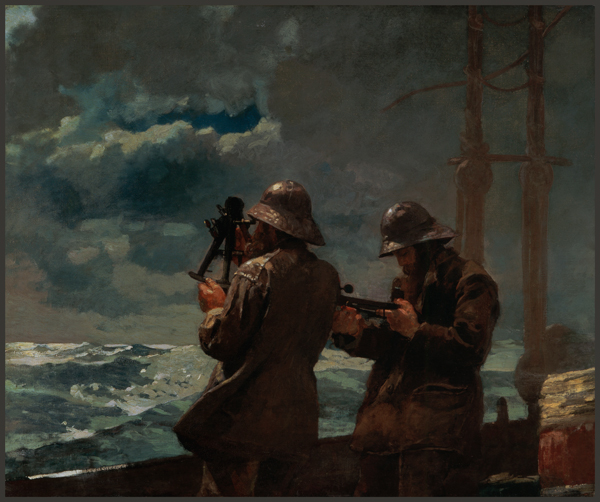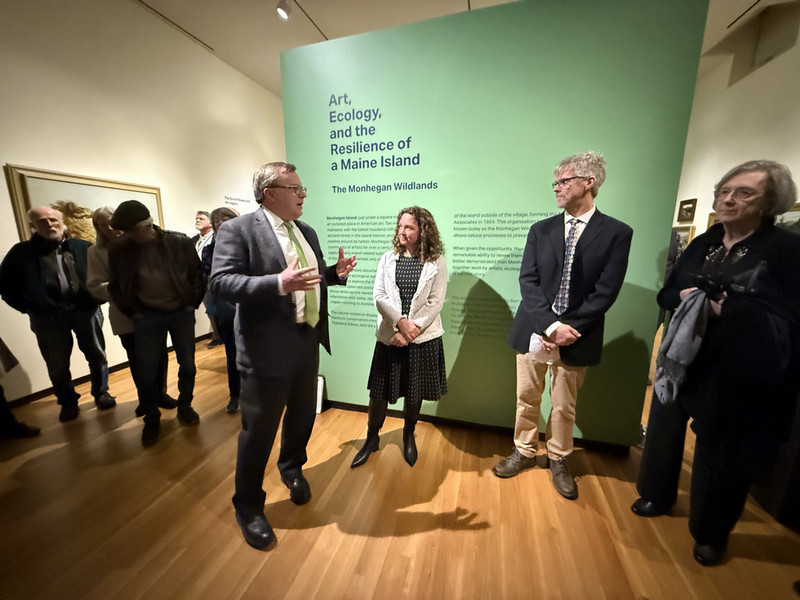Winslow Homer’s "Eight Bells"
By Bowdoin College Museum of Art
Eight Bells features two mariners, nearly identical in appearance and outfit. While one looks through his nautical instrument out to sea—like Homer looking out from the second floor balcony of his studio at Prout’s Neck—the other looks down at his instrument—like a painter studying his palette. Might Homer have considered this work a self-portrait? The pair presents two types of looking, one peering out in the distance, the other focused on something close at hand. In their spatial relationship, the two individuals bear similarities to the subjects represented in the motion study photographs of Homer’s contemporaries Thomas Eakins and Eadweard Muybridge.
Painted in 1886 and on loan from the Addison Gallery of American Art at Phillips Academy, Eight Bells is one of Homer’s most celebrated paintings and a highlight of this summer’s exhibition, Winslow Homer and the Camera: Photography and the Art of Painting. The Museum looks forward to exhibiting it alongside other paintings, watercolors, drawings, prints, and photographs created by Homer throughout his long career.
Like many painters of the late nineteenth century, Homer never spoke directly about photography, nor did he ever exhibit such images in any formal manner. Yet, during his lifetime he owned at least three cameras that he used at Prout’s Neck and during his travels beyond Maine. He also collected pictures by other photographers and posed occasionally for his portrait in photographer’s studios. As one attuned to appearances and constantly experimenting with how to represent them, Homer understood that photography as a new visual technology had much to reveal. Though he privileged his own vision and saw painting as the most compelling means to figure the world, he recognized that photography—despite its limitations and problematic reputation in the world of the fine arts—was a medium that did not undermine, but instead complemented his larger artistic interests. This exhibition aims to add an important new chapter to an appreciation of Homer and his art.



